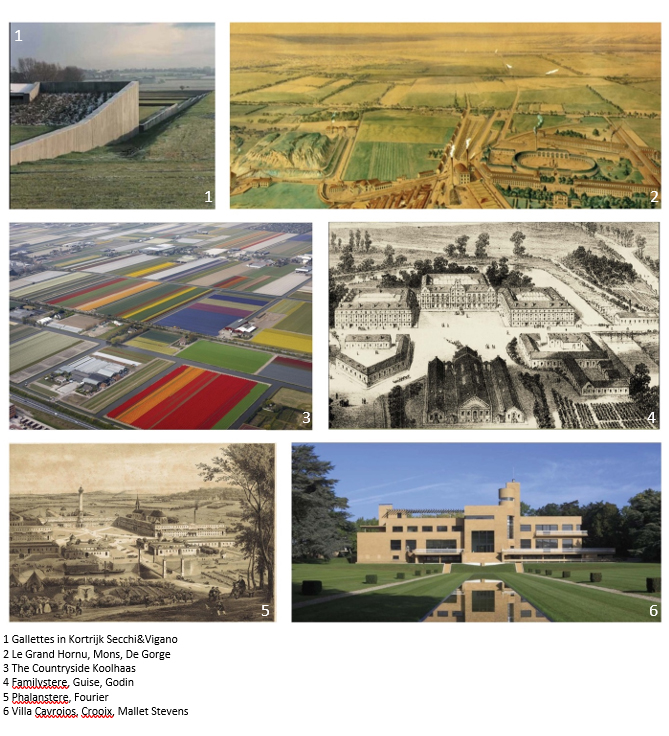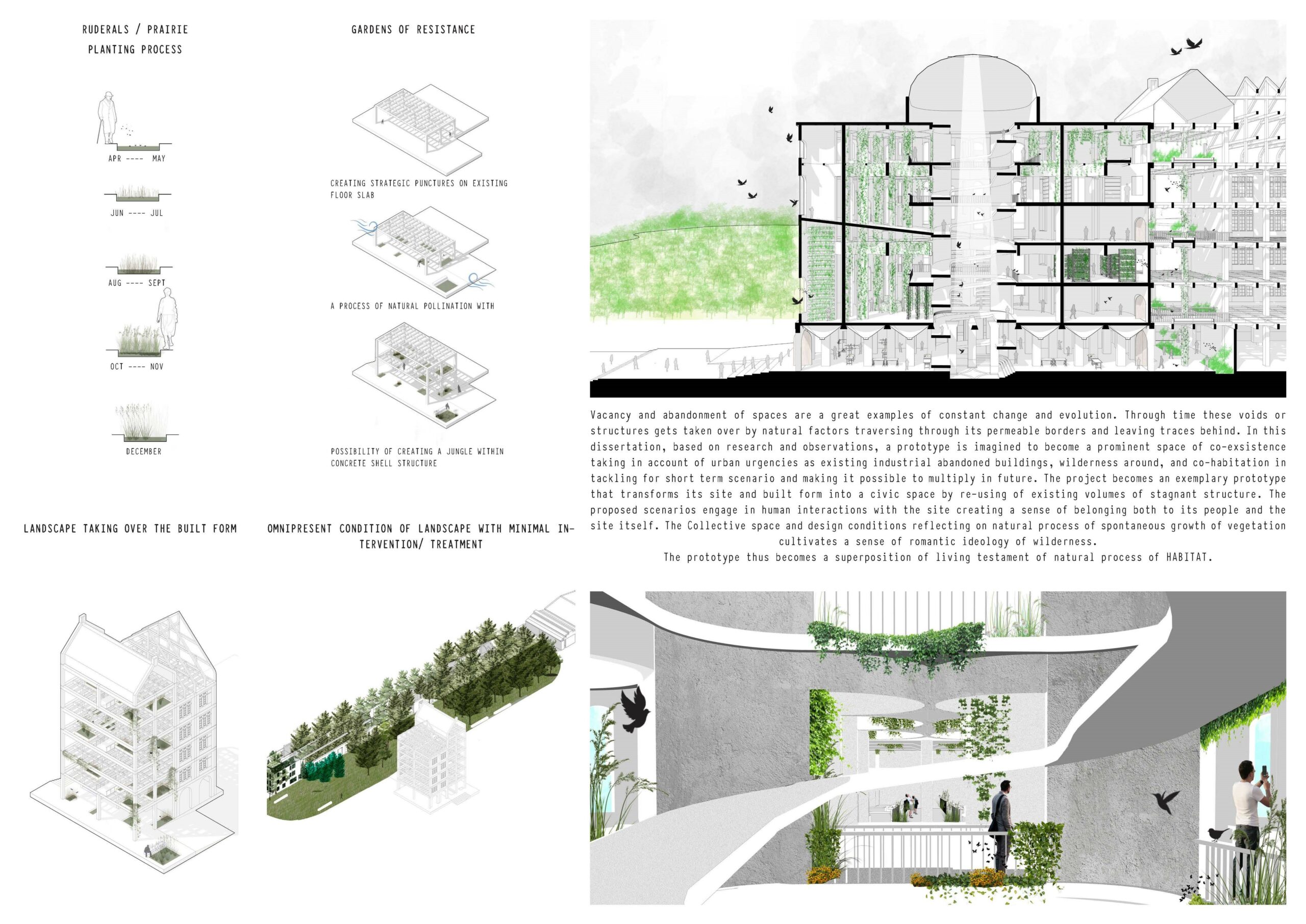TRANSITIONS AND DIALOGUES
Imagining experimental prototypes for the eurometropolis ( Lille, Tourcoing, Kortrijk)
Tutor: Erik Van Daele
Engagement: Urban Cultures, 21-22
Language: English/Dutch
Campus: Ghent
Image source: Sankeerth master studio 2021
CONTENT
In this studio we experiment with architectural prototypes that will install new dialogues between land and city, in order to value the potential qualities and characteristics of dispersed configurations.
Sprawl, nebula, cita difusa, …. are among many terms referring to a worldwide phenomenon of dispersion. A dispersed configuration is the result of an addition of small-scale individual decisions and initiatives, each with their own logic. As a result, this accumulation of fragments leads to a chaotic configuration in which city and land can no longer be distinguished from each other and function as one structure. A context we refer to as All City/All Land. Every site, every condition is at the same time urban and landscape. As there are no discrepancies between land and city, the AC/AL context is a non-binary structure. Although land and city are juxtaposed there is hardly any dialogue between them.
Ever since the 19th century architects have been experimenting with architectural prototypes as “ideal types” that introduce progressive dialogues between work, housing and landscape. Emblematic projects such as the Familistère (Godin) in Guise, the urban palace Villa Cavrois (Robert Mallet-Stevens) in Croix, the public spaces of the galettes (Secchi-Viganò) in Kortrijk or the reflection “the countryside” (Koolhaas) are explorations of a new way of cohabitation and thus question, through architecture, the current social models.

In this studio we question new ways of living, working and new social relations based on the hybridity of the current and future relation city-land. You are challenged to question and explore the territory through architecture by imagining and experimenting with new prototypes.
Which architectural intervention can play on the dialogue Land, Labour,Living?
We work in the dispersed territory of Flanders and the North of France (the Eurometropolis: Lille, Kortrijk, Tourcoing) where landscape and urban contexts are mingled. Infrastructures (lines) are the liveliness of this atypical form of metropolis. Strategic points (nodes) where the lines cross are potential urban, natural and ecological destinations.
The Eurometropolis developed a green/blue network using the verges of rail, waterways and roads (the linear forest); and the fields in between them. In this network we will detect strategic points where landscape, living and economy collide.
The current plan, however, is one-sidedly focused on the ecological value of this network.
Imagine an architectural program and intervention that will address the complexity of this network where both humans, fauna and flora are put in dialogue.
We focus on a part of the proposed network: the parallel structures between Warneton and Kortrijk as an exception in the grid-like structure. Both Warneton and Kortrijk are points where the parallel structure is pinched. This region is characterised by different edges: national and social differences, barriers between living, land and labour, commercial differences…
METHOD
SEM 1
In semester one each student will analyse a text and a project of reference that deals with dialogue living, labour and land. This will be the main body of the reflection note for the dissertation in semester2. A list of texts and projects will be provided while students can select a text of their interest.
SEM 2
We use the analysis and preparatory work made by students in the summer school and in the first semester to understand the complexity of the territory
We will evaluate proposed strategies and concepts for strategic nodes.
The main focus of the studio will be on AN INDIVIDUAL ARCHITECTURAL INTERVENTION Students will select their own site and construct their own architectural program that fits the site and the dialogue landscape, labour and living.
OUT-PUT
- A reflection note that we prepare in sem 1 (text and project of reference)
To construct the project we will use the base material (model, plans, analysis…) produced in the spring elective 2021 ( atlas), the reflections of the summer school and the explorations of semester 1 ( first master). We will only use this as base material, students will construct their own reflection on the chosen theme by reinterpreting, adjusting or complete the material that is available
The final out-put largely depends on the complexity of the project the student defines.
However, the output should have six types of drawings
- A reading of the context and the theme at hand
- A drawing that argues the urgency of the chosen theme. Why is it interesting and necessary to study by design the chosen theme for the evolution of the territory?
- A plan demonstrating the position taken by the student in addressing the chosen theme and site
- Plans of the intervention
- A continuous ground plan showing how the building and the surrounding open space dialogue
- A section in perspective showing the transitions and dialogues between the building and the open space
- An axonometric of the dialogue between the building and the landscape
These drawing will be constructed in an iterative process, a process in which we will construct the drawings week by week.

